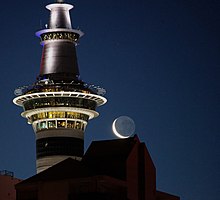The culture of Auckland encompasses the city's artistic, culinary, literary, musical, political and social elements, and is well-known throughout the world. As New Zealand's largest city and one of the most important in the Southern Hemisphere, Auckland has a rich and dynamic cultural life and a long, multicultural history. Auckland's genesis as New Zealand's cultural heart began with the large-scale settlement of its fertile land by Ngāti Whātua and various Tainui hapū, before greater settlement by further iwi such as Ngāpuhi and the arrival of Pākehā.[1] Auckland's culture derives further from its multicultural demographics, thanks to large-scale Indian, Colombian, Venezuelan, Arab, Cook Islands Māori, Tongan, Tokelauan, British, Irish, Fijian, Chinese, Niuean, Samoan, Filipino, Khmer, and intertribal Māori immigration, among others.[2][3][4] From there, these communities established ethnic strongholds (e.g. historically Samoans in Grey Lynn and Ponsonby, Chinese in Howick, Indians in Papatoetoe, etc).

Auckland has a strong arts scene, with dozens of galleries, and also a well-established food culture. The city is regarded as a highly cosmopolitan and ethnically superdiverse city,[5] with the largest Polynesian population in the world.
References
edit- ^ Taonga, New Zealand Ministry for Culture and Heritage Te Manatu. "Ngāpuhi invasion, 1820s". teara.govt.nz. Retrieved 2022-03-13.
- ^ "Venezuelan expatriates in New Zealand". www.expat.com. Retrieved 2022-03-13.
- ^ "Colombians in New Zealand – Colombian expats in New Zealand". InterNations. Retrieved 2022-03-13.
- ^ "New Zealand's Colombian community calls for solidarity as violence continues". Newshub. Archived from the original on May 8, 2021. Retrieved 2022-03-13.
- ^ Christian, Harrison (2019-01-11). "Interactive map shows Auckland's most ethnically diverse suburbs". Stuff. Retrieved 2022-03-13.